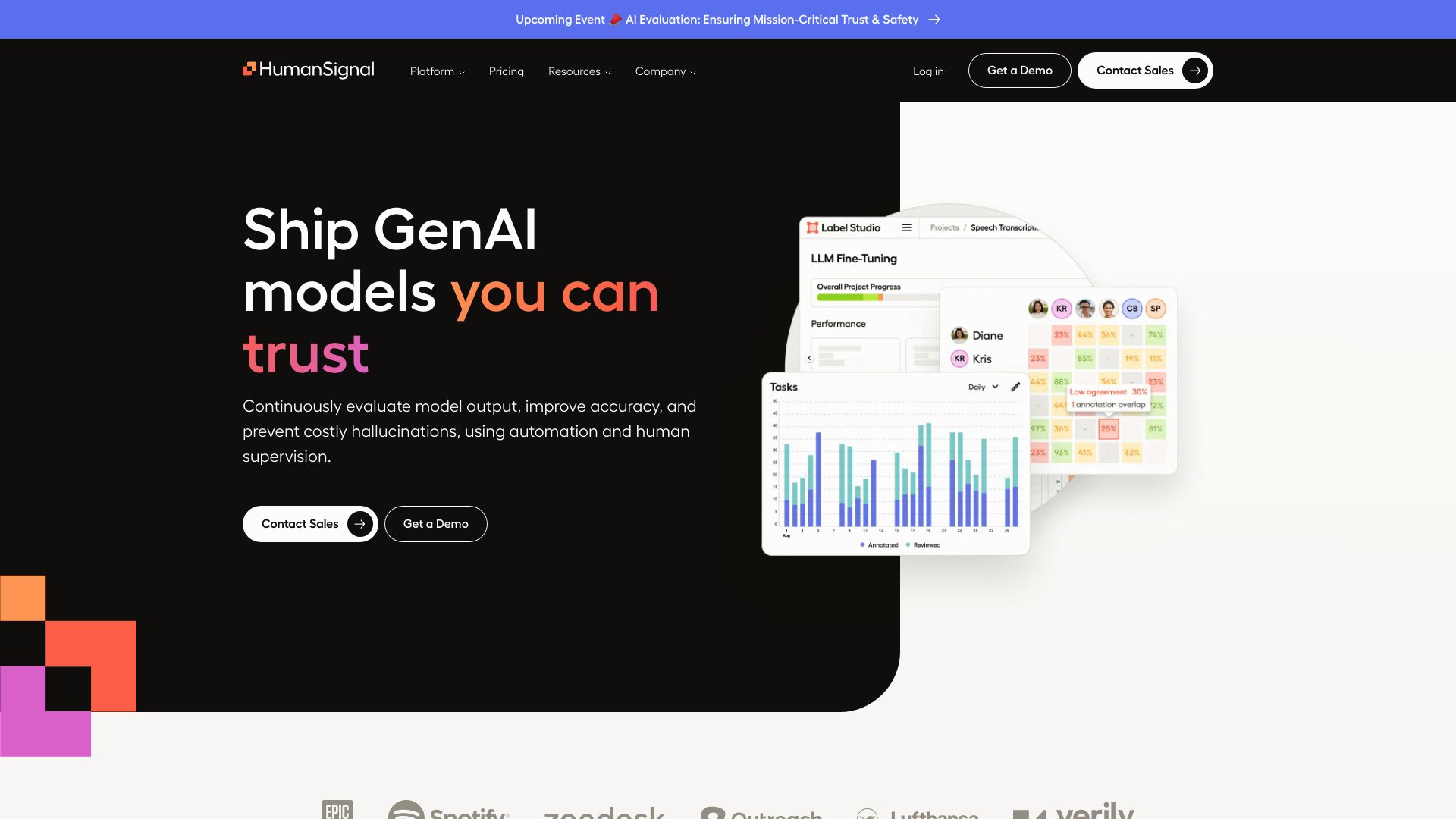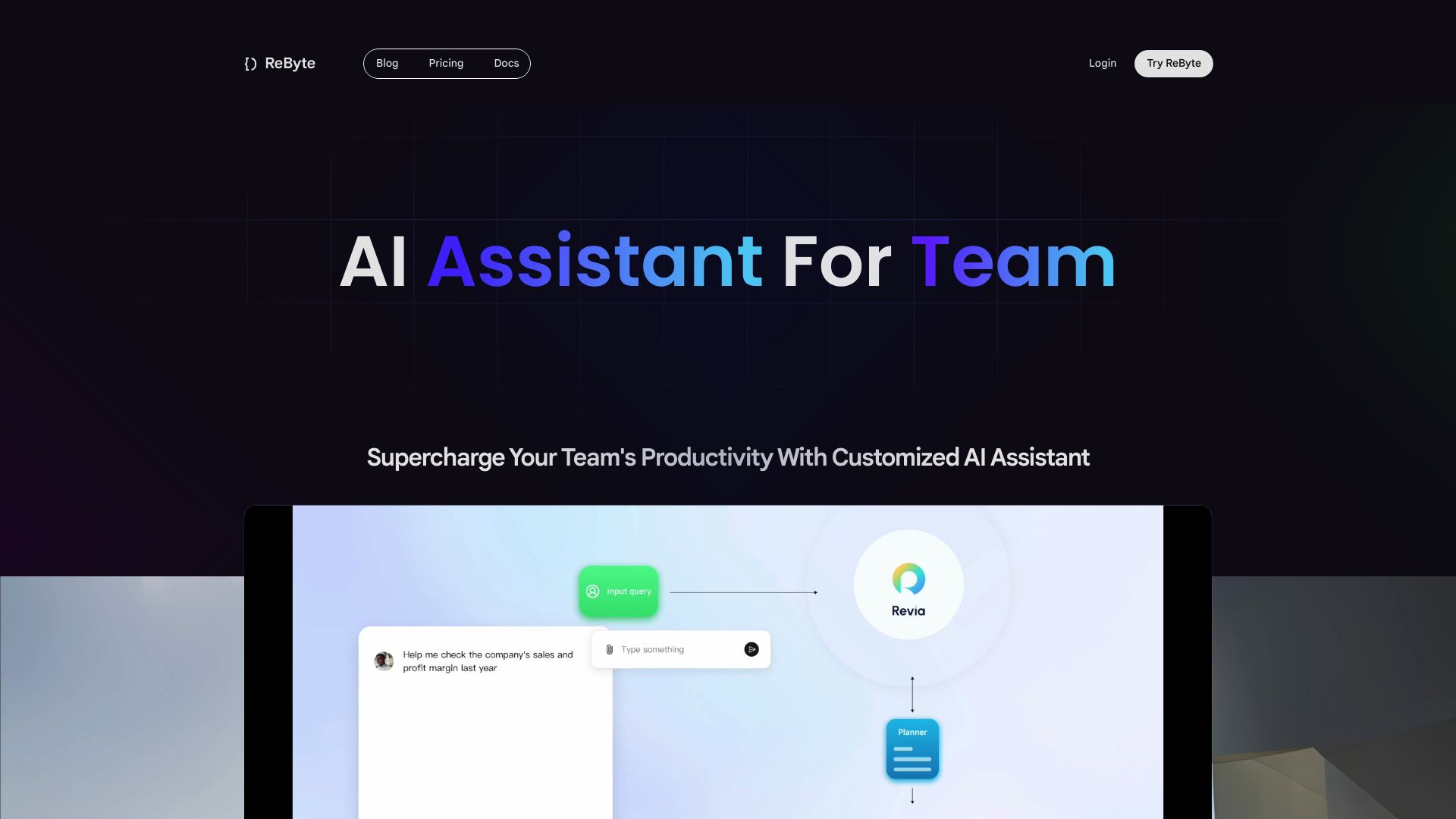Adala vs. Rebyte: Comparing AI Agent Development Platforms
AI agent development platforms revolutionize how businesses harness artificial intelligence. This comparison between Adala vs. Rebyte explores Adala, an open-source framework for autonomous data labeling, and Rebyte, a visual AI application builder. We examine their unique approaches, strengths, and limitations to help you choose the right tool for your AI development needs.
From Adala’s emphasis on iterative learning to Rebyte’s no-code interface, discover how these platforms tackle complex AI tasks. We also introduce SmythOS, a comprehensive solution that combines powerful AI capabilities with user-friendly design, offering unparalleled flexibility and ease of use for developers, business leaders, and AI enthusiasts alike.
Adala Overview
Adala pioneers open-source autonomous data labeling. This framework empowers developers to create AI agents that learn and refine data labeling skills through iterative processes and human feedback.


Adala’s core functionality revolves around large language models like GPT-3, which serve as the runtime for executing specialized skills such as text classification, summarization, and question-answering. The platform’s modular architecture promotes extensibility, allowing users to create custom skills tailored to specific data labeling needs.
Adala pioneers open-source autonomous data labeling… empowers developers to create AI agents that learn and refine data labeling skills through iterative processes and human feedback.
A key strength of Adala lies in its learning capabilities. Agents improve their performance by training on labeled datasets provided by users, ensuring alignment with specific labeling requirements. The framework also incorporates a human feedback loop, enabling agents to refine their skills based on expert input, thus maintaining high-quality outputs.
While Adala offers powerful tools for creating autonomous data labeling agents, it requires a certain level of technical expertise to implement effectively. The platform lacks a visual builder or no-code editor, which may present a steeper learning curve for non-technical users. However, for developers and data scientists, Adala provides a flexible and powerful framework for building specialized AI agents that can significantly streamline data labeling processes.
Rebyte Overview
Rebyte empowers users to rapidly develop AI-powered applications without extensive coding expertise. The platform’s visual agent builder allows creation of customizable AI agents with multi-step workflows using large language models. This enables construction of complex backend logic through an intuitive interface.


Rebyte’s key strengths lie in its no-code approach to AI application development. Users can craft fully customized user interfaces for their agents without writing code. The platform also offers integrations with private data sources, providing flexibility in handling proprietary information. Detailed observability into every step of an agent’s process allows for fine-tuned control and optimization.
Rebyte empowers users to rapidly develop AI-powered applications without extensive coding expertise.
The serverless runtime provided by Rebyte facilitates seamless production deployment and scaling of agents. This infrastructure support removes many technical barriers, allowing teams to focus on agent logic and functionality rather than backend management. However, the platform’s reliance on visual building blocks may limit advanced customization options for highly specialized use cases.
Rebyte aims to democratize AI application development, enabling knowledge workers and teams to automate workflows and enhance productivity. While powerful for its intended audience, users requiring deep technical integrations or highly specific AI model architectures may find the platform’s abstraction layer limiting. Overall, Rebyte offers an accessible entry point into AI agent development, particularly suited for business users and teams looking to rapidly prototype and deploy AI-powered solutions.
Feature Comparison
Adala and Rebyte offer distinct approaches to AI agent development, with notable differences in their core components and security features. Adala provides an open-source framework for building autonomous data labeling agents, emphasizing iterative learning and human feedback. In contrast, Rebyte focuses on rapid AI application development through a visual interface, catering to users with limited coding expertise.
A key feature gap lies in the visual building capabilities. Rebyte offers a visual agent builder and no-code editor, allowing users to create complex AI workflows without extensive programming knowledge. Adala lacks these visual tools, requiring users to interact with the framework through code and APIs. This difference significantly impacts the accessibility and ease of use for non-technical users.
In terms of security, Rebyte provides more robust features like data encryption and OAuth support, which are not explicitly mentioned for Adala. This gap in security implementations could be crucial for enterprises dealing with sensitive data or requiring stringent access controls. While both platforms offer scalability and API deployment options, Rebyte’s serverless runtime and detailed observability into agent processes provide additional advantages for production deployment and optimization.
| Adala | Rebyte | SmythOS | |
|---|---|---|---|
| CORE FEATURES | |||
| Hosted Agents (Dev, Production) | ❌ | ✅ | ✅ |
| Visual Builder | ❌ | ✅ | ✅ |
| No-Code Options | ❌ | ✅ | ✅ |
| Autonomous Agents | ✅ | ❌ | ✅ |
| Debug Tools | ❌ | ✅ | ✅ |
| Multimodal | ❌ | ❌ | ✅ |
| Multi-Agent Collaboration | ❌ | ❌ | ✅ |
| Audit Logs for Analytics | ❌ | ✅ | ✅ |
| SECURITY | |||
| Constrained Alignment | ✅ | ❌ | ✅ |
| Data Encryption | ❌ | ❌ | ✅ |
| OAuth | ❌ | ❌ | ✅ |
| IP Control | ❌ | ❌ | ✅ |
| COMPONENTS | |||
| Huggingface AIs | ❌ | ❌ | ✅ |
| Zapier APIs | ❌ | ✅ | ✅ |
| All other APIs, RPA | ❌ | ✅ | ✅ |
| Classifiers | ✅ | ❌ | ✅ |
| Logic | ✅ | ❌ | ✅ |
| Data Lakes | ❌ | ❌ | ✅ |
| DEPLOYMENT OPTIONS (EMBODIMENTS) | |||
| Deploy as Webhook | ❌ | ❌ | ✅ |
| Staging Domains | ❌ | ❌ | ✅ |
| Production Domains | ❌ | ❌ | ✅ |
| API Authentication (OAuth + Key) | ❌ | ❌ | ✅ |
| Deploy as Site Chat | ❌ | ✅ | ✅ |
| Deploy as Scheduled Agent | ❌ | ❌ | ✅ |
| DATA LAKE SUPPORT | |||
| Sitemap Crawler | ❌ | ❌ | ✅ |
| YouTube Transcript Crawler | ❌ | ✅ | |
| URL Crawler | ❌ | ❌ | ✅ |
| PDF Support | ❌ | ✅ | ✅ |
| Word File Support | ❌ | ✅ | ✅ |
| TXT File Support | ❌ | ✅ | ✅ |
Best Alternative to Adala and Rebyte
SmythOS emerges as the superior agentic AI automation platform compared to Adala and Rebyte. Our comprehensive solution offers unparalleled versatility and power for building AI agents. SmythOS delivers an intuitive drag-and-drop interface that enables users to rapidly construct complex AI workflows without extensive coding.
This visual approach dramatically speeds up development compared to Adala’s code-centric framework or Rebyte’s limited visual tools. We provide pre-built API integrations and templates for common tasks, allowing users to focus on innovation rather than setup. Our multi-agent orchestration capabilities enable teams of AI agents to collaborate on intricate tasks, far surpassing the single-agent focus of competitors.
SmythOS delivers an intuitive drag-and-drop interface that enables users to rapidly construct complex AI workflows without extensive coding.
SmythOS supports deployment across various platforms like Google Vertex, Microsoft Copilot, and AWS Bedrock. This flexibility ensures seamless integration into existing enterprise systems. We offer robust security features including data encryption and OAuth support, addressing critical needs that Adala and Rebyte lack.
With SmythOS, users gain access to a complete ecosystem for effortlessly creating, deploying, and managing sophisticated AI agents at scale. Our platform democratizes AI development while providing the advanced capabilities needed to drive significant business value across unlimited use cases.
Conclusion
Adala and Rebyte each bring unique strengths to AI agent development. Adala excels in open-source autonomous data labeling, leveraging large language models and human feedback for iterative learning. Rebyte shines with its visual builder and no-code approach, democratizing AI application creation for users without extensive coding expertise.
SmythOS elevates the AI development experience beyond both alternatives. Our platform combines the best of both worlds — powerful AI capabilities and user-friendly design. With SmythOS, users gain access to a comprehensive suite of tools including visual building, multi-agent collaboration, and versatile deployment options. We offer unparalleled flexibility, allowing integration with various AI models, APIs, and data sources.
For those seeking to harness the full potential of AI without compromising on ease of use or scalability, SmythOS stands out as the superior choice. Our platform empowers users to create sophisticated AI solutions rapidly, whether you’re a developer, business leader, or AI enthusiast. Experience the SmythOS difference by signing up for a free account today and discover how we can transform your AI development workflow.
Last updated:
Disclaimer: The information presented in this article is for general informational purposes only and is provided as is. While we strive to keep the content up-to-date and accurate, we make no representations or warranties of any kind, express or implied, about the completeness, accuracy, reliability, suitability, or availability of the information contained in this article.
Any reliance you place on such information is strictly at your own risk. We reserve the right to make additions, deletions, or modifications to the contents of this article at any time without prior notice.
In no event will we be liable for any loss or damage including without limitation, indirect or consequential loss or damage, or any loss or damage whatsoever arising from loss of data, profits, or any other loss not specified herein arising out of, or in connection with, the use of this article.
Despite our best efforts, this article may contain oversights, errors, or omissions. If you notice any inaccuracies or have concerns about the content, please report them through our content feedback form. Your input helps us maintain the quality and reliability of our information.
